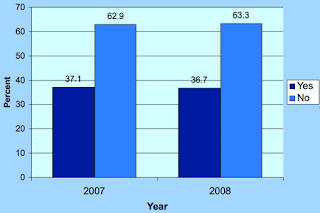 Revised real GDP estimates were released yesterday. Data are on an annual percent change basis from a year ago and the shaded area represents the 2001 recession. Talk about a picture being worth a thousand words…click on the graph to enlarge.
Revised real GDP estimates were released yesterday. Data are on an annual percent change basis from a year ago and the shaded area represents the 2001 recession. Talk about a picture being worth a thousand words…click on the graph to enlarge.
The value of building strategic networks
Historically, the green industry has been very fragmented in terms of the size of firms in the industry and the diversity of what they do. This has also meant that growers, service providers, and retailers have been very independent in nature.
In recent years, however, we have seen more interdependent business relationships develop in the form of contract growing, strategic alliances or networks, and joint ventures. In the trade press, we have seen feature stories on folks like Novalis, Bell Nursery, etc. and the advantages of operating as a network rather than an isolated firm.
There are several who have asked me whether I thought such networks are a good idea. The answer, of course, is it depends on what you want those alliances to do for you — there are advantages and disadvantages. Here is a quick summary of each:
Potential Advantages of Partnering Networks and Alliances
- Better access to markets
- Improved cash flow
- Reduced overhead
- Improved access to capital
- Obtain capital that would have been otherwise unavailable
- Credibility is enhanced
- Access to facilities and technology
- Access to managerial/marketing expertise
- Ability to keep the company small
- More products to sell
- Innovative products
- Creative people
- Gain cost advantages through scale and locational economies
- Speed and flexibility in delivering new products
- Ability to hedge your own R&D; efforts
- Less costly than buying a company
- Cost savings
- Product distribution
- Diversification into new markets
- Manufacturing capability
- Reduced risk
- Knowledge and know-how
- Avoid need to reinvent what has been invented elsewhere
- The shoring up of weak areas in the company
- Strengthened relationships with key suppliers or customers
- Ability to move quickly
- Ability to stay focused on core competence
- Realize political or legal advantages via relationship with a partner enjoying regional or national recognition.
- Exploit multiple synergies in production, marketing, and finance.
Potential Disadvantages of Partnering Networks and Alliances
- Significant time required to build trust
- Greater relationship risk
- Sharing of future profits
- Opportunity cost of losing other opportunities
- Barriers to future financing opportunities
- Distractions of relationship building
- Creating a competitor or a potential competitor
- Unexpected disappointments and headaches from your partner
- Create indirect costs by blocking the possibility of cooperating with competing companies
The bottom line:
Formal contracts do not make successful relationships.
People do.
Mother's Day followup
Despite the current economic situation, the proportion of American adults purchasing fresh flowers or plants for Mother’s Day held steady compared to 2007. A solid 36.7 percent of adult consumers purchased floral gifts for the holiday, less than one half of one percent below the finding in 2007 (37.1 percent). Forty-three percent of adult males and 31 percent of adult females made floral purchases for Mother’ Day.
 Source: Synovate’s eNation online survey, commissioned by SAF, of 1,000 adults age 18 or older in the contiguous U.S., conducted May 12-14, 2008; SAF website.
Source: Synovate’s eNation online survey, commissioned by SAF, of 1,000 adults age 18 or older in the contiguous U.S., conducted May 12-14, 2008; SAF website.
What can we learn from Saks???
The wider economy was the scapegoat for Home Depot, which posted a 66% drop in net income. However, Saks Fifth Avenue appeared unbowed by the difficulties and continues to illustrate the way luxury brands can avert some of the pain felt by other retailers.
The economic downturn has been particularly difficult for home-improvement chains such as Home Depot and rival Lowe’s. The retailers are double-teamed by a drop in the housing market and a slowdown in consumer spending.
Saks was the inverse of Home Depot, posting a 66% increase in net income. How does this happen? How does a firm selling in the luxury market experience an increase in sales during a period of economic contraction?
The answer, for the umpteenth time, is differentiation. In this case, a level of service and perceived value (notice I did not say low price) that is unparalleled by other stores. For related rantings, see my earlier post regarding the elasticity effects of successful differentiation.
In a recent American City Business Journal interview, entrepreneur brewer Karan Bilimoria describes the type of innovative thinking that helped him build his business. Bilimoria said the keys to success can be described in three key points: Be different; be better and create new markets.
Mergers and Aquisitions slowing
Sluggishness in the U.S. economy is affecting mergers and acquisition activity in various industrial products sectors, namely industrial manufacturing, metals and chemicals, according to PricewaterhouseCoopers reports on first-quarter M&A.; Although M&A; deal activity remains steady, the value and volume of the transactions is not expected to surpass 2007 levels. I think the same can be said of M&A; activity in the Green Industry. Modern Distribution Management (5/14)
Farm Bill passes House & Senate
The Food, Conservation and Energy Act of 2008, the farm bill conference agreement, has been passed by the House and Senate and will now be sent to the White House. Portions of the farm bill of interest to Green Industry participants include the following:
Specialty Crop Research Initiative: The bill provides $230 million in mandatory funds for this new grants program to help meet the needs of producers and processors of specialty crops in the areas of mechanization, plant breeding, genetics, genomics, pests and diseases, and food safety.
Rural Microenterprise Assistance Program: $15 million in mandatory funds for the program, which provides technical assistance and small loans to beginning entrepreneurs to help start businesses in rural areas.
Rural Water and Wastewater: $120 million in mandatory funds for the pending rural development loan and grant applications for rural water and wastewater assistance.
Pest and Disease Detection: Over $400 million over the next ten years for a new program to improve our pest and disease detection capabilities. The bill also provides $20 million for the National Clean Plant Network, which will strengthen our research to improve plant health and eradicate plant viruses.
Organics: Funding for The National Organic Certification Cost-Share Program has been increased from $5 million in the last farm bill, to $22 million. The farm bill also supports the Organic Data Collection Initiative, which provides USDA and organic producers with national production and market data to effectively market their products.
Energy: The farm bill will accelerate commercialization of advanced biofuels, like cellulosic ethanol, by providing grants and loan guarantees to support these new biorefineries, and by increasing bioenergy research to guarantee that we have a continuing flow of more productive and resource-conservative technologies in the decades to come.
It also expands the very successful renewable energy and energy efficiency program that has been helping our farmers and ranchers and rural small businesses since it was adopted in the 2002 farm bill.
The farm bill has received MUCH attention (criticism) due to the fact that commodity prices are high, food prices are high, and the general public has no clue as to nature of the underlying economics and food security issues surrounding the farm (and consumer) programs included in the farm bill.
America has had, and continues to have, the cheapest and safest food supply in the world. But all bets are off as far as public support of agriculture just as soon as any detectable increase in food prices is detected. Then big, bad “rich” farmers are to blame. This is the same reasoning as I have posted earlier regarding the supply/demand issues surrounding gasoline prices (see Melodrama and Villains post).
Latest consumer confidence data
An adage among economists is that recessions are crises of confidence. Consumer confidence tumbled to its lowest in 28 years this month, a survey showed on Friday, as short-term inflation expectations reached the highest levels since the stagflationary early 1980s.
The news heightens the dilemma for the Federal Reserve, which has bet that slowing economic growth will tame inflation pressures. The report also showed that lower-income households were the focus of the downturn in sentiment. The Reuters/University of Michigan Surveys of Consumers’ preliminary index of confidence fell to 59.5 in May, the lowest since June 1980. In April it was at 62.6.
This data is somewhat disturbing given that consumer confidence is usually correlated with the necessary consumer expenditures to drag an economy out of recessionary times.
And yet, just a couple of days ago, I reported that that the Commerce Department’s retail-sales report showed an overall 0.2% decline BUT exhibited a 0.5% increase when auto sales were excluded.The resilience of the consumer seen in that report is particularly encouraging given that this number largely represents spending that occurred prior to the receipt of the economic stimulus rebates. While it’s conceivable that some spending may have been pulled forward in anticipation of the rebate checks, survey responses and historical experience suggest these outlays occur only after the checks have been received.
The bottom line…we need to keep close tabs on all of these indicators. It’s also an election year which means that some consumers will be very happy with the outcome and others not so cheerful. Either way, you might want to check out my February 18 post on how to combat falling consumer confidence.
Melodrama and villains
Ok, I couldn’t resist. Tom Sowell spells it out nicely:
With all the commotion in the media and in politics about the high price of gasoline, is there really some terribly complex explanation?
Is there anything complex about the fact that with two countries– India and China– having rapid economic growth, and with combined populations 8 times that of the United States, they are creating an increased demand for the world’s oil supply?
The problem is not that supply and demand is such a complex explanation. The problem is that supply and demand is not an emotionally satisfying explanation. For that, you need melodrama, heroes and villains.
Click here for the rest of his entertaining article.
I think the graph below drives the point home!
Consumers showing resilience
Today, the Commerce Department’s retail-sales report showed an overall 0.2% decline BUT exhibited a 0.5% increase when auto sales were excluded.The resilience of the consumer seen in today’s report is particularly encouraging given that this number largely represents spending that occurred prior to the receipt of the economic stimulus rebates. While it’s conceivable that some spending may have been pulled forward in anticipation of the rebate checks, survey responses and historical experience suggest these outlays occur only after the checks have been received.
Mother's Day radio segment
Click here to listen to a short Mother’s Day radio story developed through the Texas Department of Agriculture.
